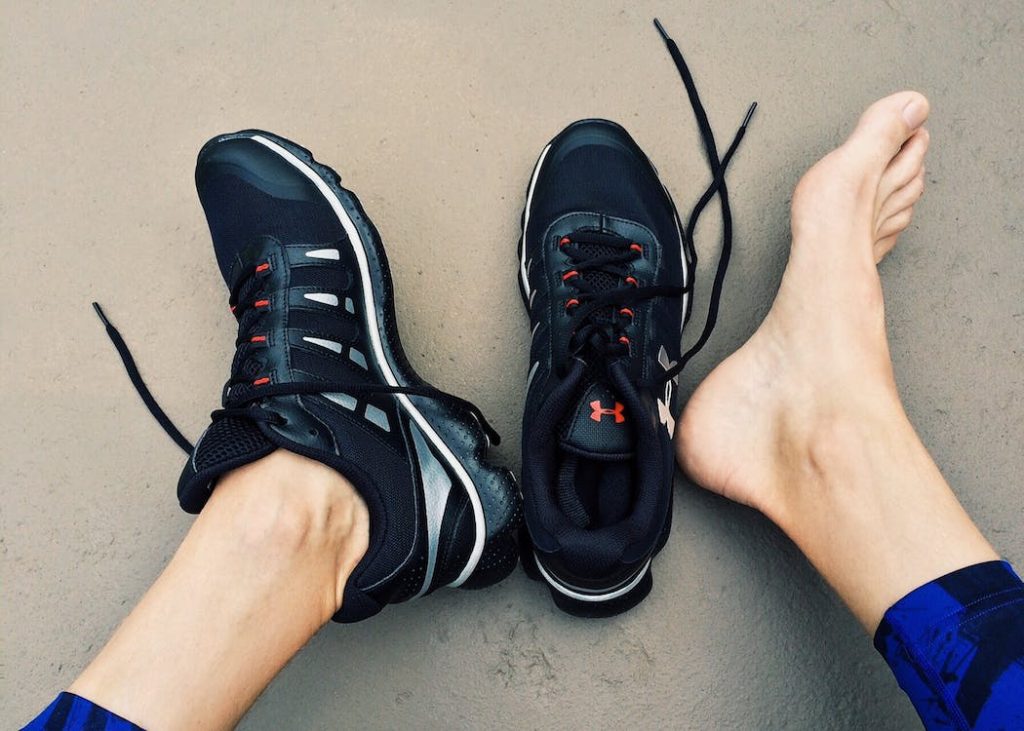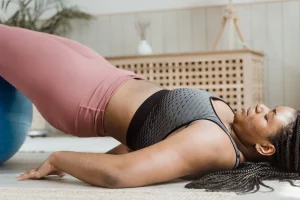How to Choose the Perfect Running Shoes: A Comprehensive Guide


How to Choose the Perfect Running Shoes: A Comprehensive Guide


Introduction
Selecting the right running shoes is a crucial step in ensuring a comfortable and injury-free running experience. Whether you’re a seasoned marathoner or a casual jogger, investing time in finding the perfect pair is worth it. The right running shoes can enhance your performance, provide optimal support, and protect your feet from the impact of each stride. In this comprehensive guide, we’ll walk you through a step-by-step process on how to choose the best running shoes for your unique needs. Additionally, we’ll explore some top manufacturers and a wider range of their best shoes to help you make an informed decision.
1. Assess Your Foot Type
Understanding your foot type is the first step in finding the right running shoes. There are three main foot types: neutral, pronated, and supinated.
Neutral Foot Type:
– Your footprint shows a distinct curve along the inside edge of the foot.
– Best Shoe Choice: Neutral cushioned shoes that offer a balance of cushioning and support, promoting natural foot movement.
Pronated Foot Type:
– Your footprint shows a complete imprint of your foot with little to no curve.
– Best Shoe Choice: Stability shoes with adequate arch support to prevent overpronation and maintain proper alignment.
Supinated Foot Type:
– Your footprint shows a curve along the outside edge of the foot.
– Best Shoe Choice: Cushioned shoes with ample shock absorption to counter the impact of supination.
2. Analyze Your Running Style
Understanding your running style will help you find shoes that suit your stride and gait.
Heel Striker:
– You primarily strike the ground with your heel first.
– Best Shoe Choice: Shoes with extra heel cushioning to absorb impact and reduce stress on joints.
Midfoot Striker:
– You land on the middle of your foot.
– Best Shoe Choice: Shoes with balanced cushioning and support throughout the midsole.
Forefoot Striker:
– You land on the balls of your feet.
– Best Shoe Choice: Shoes with ample cushioning in the front to support the forefoot impact.
3. Determine Your Running Terrain
Consider the type of terrain you’ll be running on most frequently.
Road Running:
– Best Shoe Choice: Road running shoes designed for pavement and provide good traction.
Trail Running:
– Best Shoe Choice: Trail running shoes with durable outsoles and added protection for uneven surfaces.
Treadmill Running:
– Best Shoe Choice: Any well-cushioned running shoes suitable for your foot type will work on treadmills.
4. Visit a Specialty Running Store
Visit a specialty running store where experts can analyze your gait and recommend suitable shoes based on your foot type, running style, and terrain preference.
5. Try Before You Buy
When trying on running shoes, follow these steps:
a. Bring Your Running Socks:
– Wear the socks you typically use for running to ensure an accurate fit.
b. Measure Both Feet:
– Feet can vary slightly in size, so measure both and choose the size that accommodates the larger foot.
c. Test Different Models:
– Try on various brands and models to find the best fit and comfort.
d. Take a Test Run:
– If allowed, take a short run in the store to assess how the shoes feel during movement.
e. Check for Toe Space:
– Ensure there is about a thumb’s width of space between your longest toe and the end of the shoe.
f. Evaluate Overall Comfort:
– Pay attention to any pressure points or discomfort, as this can be an indication of an improper fit.
6. Consider Shoe Size and Width
Running shoe sizing can differ from casual shoe sizing. Factors like foot swelling during long runs should be taken into account.
a. Go Slightly Bigger:
– Choose a shoe that is a half size to a full size larger than your casual shoe size.
b. Opt for Wider Options:
– If you have wider feet, look for shoes available in different width options for a better fit.
7. Look for Proper Cushioning and Support
Proper cushioning and support are essential for preventing injuries and ensuring a comfortable run.
a. Neutral Foot Type:
– Best Shoe Choice: Look for shoes with balanced cushioning that provide adequate support for your arches.
b. Pronated Foot Type:
– Best Shoe Choice: Opt for stability shoes with features that support and correct overpronation.
c. Supinated Foot Type:
– Best Shoe Choice: Choose shoes with extra cushioning to absorb the impact of supination.
8. Check the Flexibility
The flexibility of the shoe’s sole is vital for a natural and efficient running stride.
a. Bend Test:
– Perform a “bend test” by gently bending the shoe at the ball of the foot. It should flex easily.
b. Twist Test:
– The shoe should have some torsional flexibility to allow your foot to move naturally.
9. Consider the Weight
The weight of your running shoes can impact your running efficiency and performance.
a. Lighter Shoes:
– Best for racing, speedwork, and shorter runs.
b. Slightly Heavier Shoes:
– Best for training and longer runs, as they provide more support and cushioning.
10. Top Running Shoe Manufacturers and Their Best Shoes
Nike
– Nike Air Zoom Pegasus: A versatile and reliable option for neutral runners.
– Nike React Infinity Run: Designed to reduce the risk of running-related injuries with excellent cushioning and support.
– Nike ZoomX Vaporfly NEXT%: A high-performance racing shoe with exceptional energy return.
Adidas
– Adidas Ultraboost: Known for its responsiveness and energy return, suitable for various running styles.
– Adidas Solar Glide: Offers a smooth ride and stability for runners who need mild overpronation support.
– Adidas Adizero Adios: A lightweight racing shoe favored by competitive runners.
Brooks
– Brooks Ghost: A popular choice for its plush cushioning and balanced support, great for long-distance running.
– Brooks Adrenaline GTS: Provides excellent stability and is recommended for runners with overpronation.
– Brooks Levitate: Features responsive cushioning for runners seeking energy return.
Asics
– Asics Gel-Kayano: Offers a combination of comfort and stability, making it ideal for long training runs.
– Asics Gel-Nimbus: Known for its exceptional cushioning, suitable for neutral runners seeking maximum comfort.
– Asics GT-2000: A reliable stability shoe for moderate overpronators.
New Balance
– New Balance Fresh Foam 1080: A well-cushioned neutral shoe for everyday training and long-distance runs.
– New Balance FuelCell Rebel: A lightweight and responsive option, perfect for speed and tempo runs.
Saucony
– Saucony Ride: A versatile neutral shoe with a responsive ride, suitable for various distances.
– Saucony Guide: Offers stability and support for runners who need pronation control.
Mizuno
– Mizuno Wave Rider: A classic neutral shoe with a smooth and responsive feel.
– Mizuno Wave Inspire: Provides stability and support for runners with mild to moderate overpronation.
Hoka One One
– Hoka One One Clifton: Known for its maximum cushioning and lightweight feel, ideal for long runs.
– Hoka One One Arahi: Offers stability and support with a lightweight construction.
Under Armour
– Under Armour HOVR Machina: A versatile shoe with energy return and a connected technology feature.
– Under Armour Charged Bandit: A lightweight option for neutral runners looking for speed and comfort.
Reebok
– Reebok Forever Floatride Energy: Provides a responsive and comfortable ride for daily training.
– Reebok Harmony Road: Offers stability and cushioning for longer runs and increased comfort.
Altra
– Altra Escalante: Known for its zero-drop platform and a roomy toe box for a natural feel.
– Altra Provision: Offers stability with its unique GuideRail system for overpronation control.
Salomon
– Salomon Speedcross: A rugged trail shoe with aggressive traction for challenging terrains.
– Salomon Sonic: A road shoe with responsive cushioning for a smooth ride.
Puma
– Puma Deviate Nitro: Offers a lightweight and bouncy ride for fast-paced runs.
– Puma UltraRide: Known for its responsive cushioning and lightweight design.
Skechers
– Skechers GOrun Razor+: A racing shoe with a carbon plate for increased propulsion.
– Skechers GOrun MaxRoad 4+: Provides cushioning and support for longer runs.
Tips for Running Shoe Maintenance
1. Rotate Your Shoes
Avoid wearing the same pair of running shoes every day. Rotate between at least two pairs to extend their lifespan and give them time to decompress between runs.
2. Keep Them Clean
Regularly clean your running shoes to prevent dirt and grime buildup. Use a gentle brush and mild soap to remove any stains, and let them air dry.
3. Replace Them Timely
Pay attention to the wear and tear of your shoes. Replace them every 300 to 500 miles, or if you notice significant midsole compression or outsole damage.
4. Don’t Use Them for Other Activities
Reserve your running shoes exclusively for running. Using them for other activities can accelerate their wear and affect their performance.
5. Use Insoles or Orthotics If Needed
If you have specific foot issues or need extra support, consider using custom insoles or orthotics to enhance the fit and comfort of your shoes.
Conclusion
Choosing the right running shoes is an essential part of being a runner. By considering factors such as your foot type, running style, terrain, and preferences, you can find the perfect pair that supports your individual needs. Remember to visit a specialty running store for expert advice and try on different models to find the best fit. With the right shoes on your feet, you’ll be well on your way to enjoying a comfortable and rewarding running journey.








